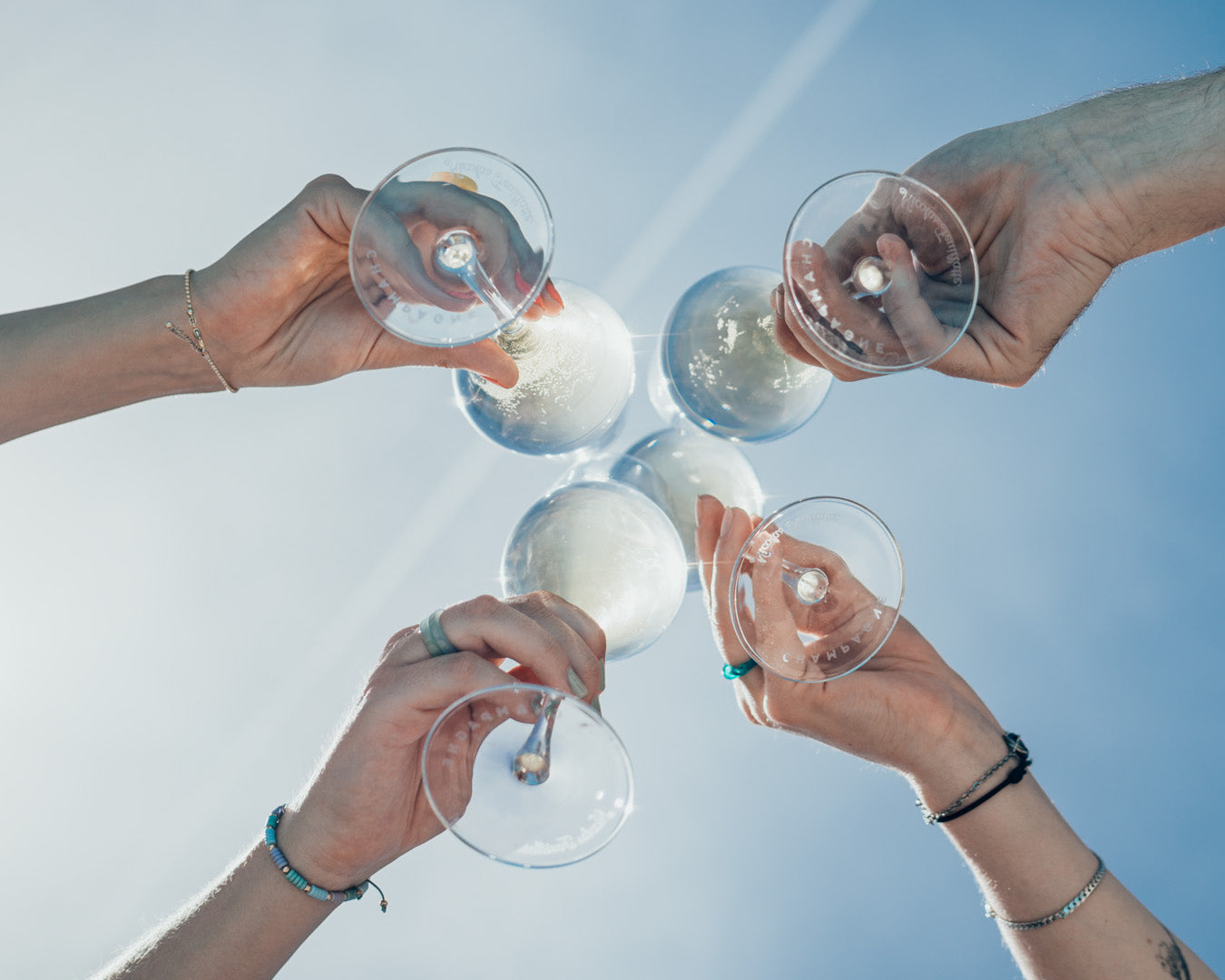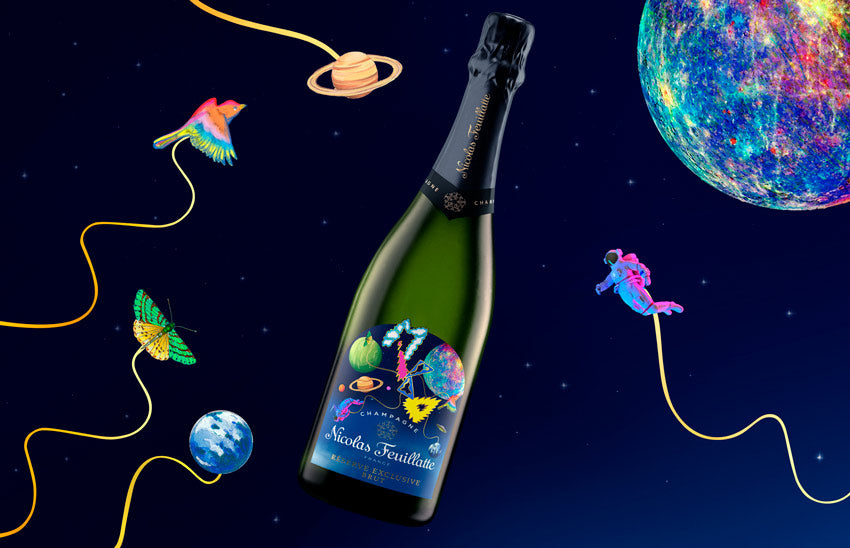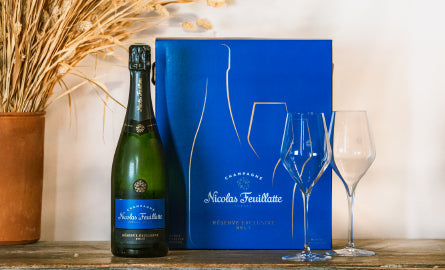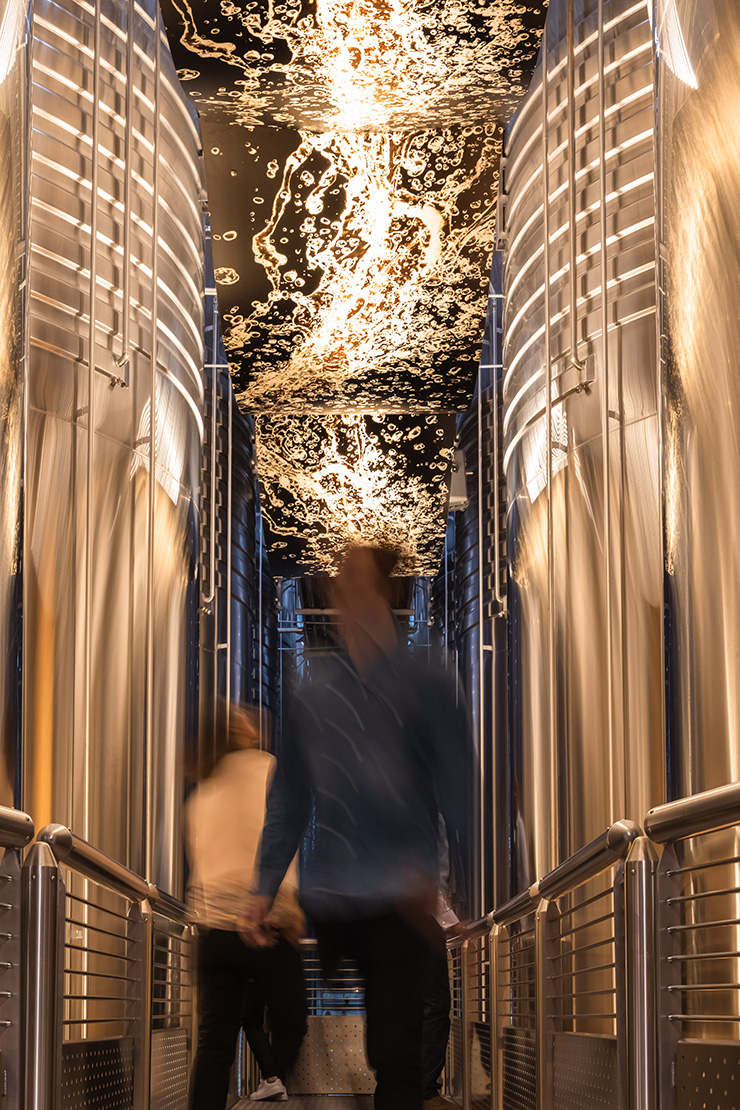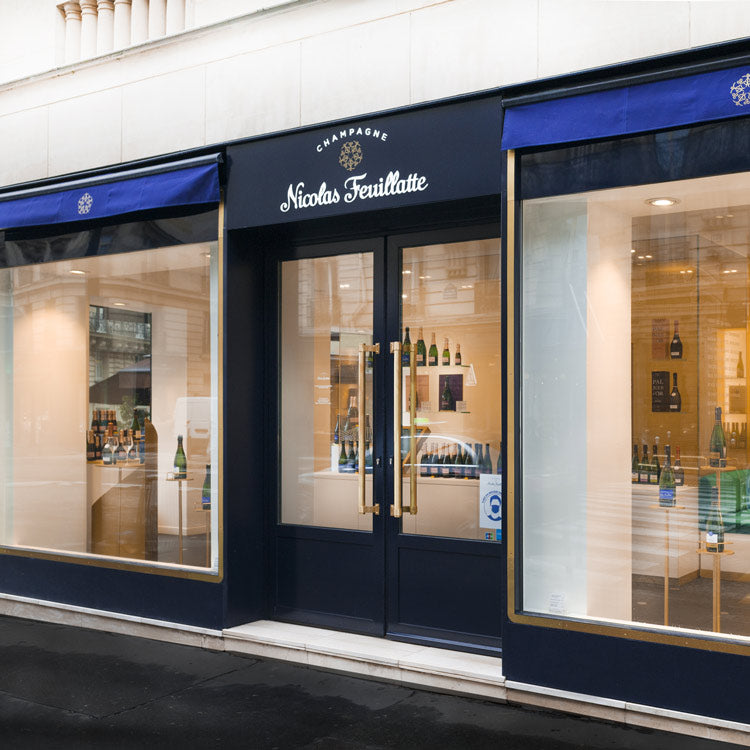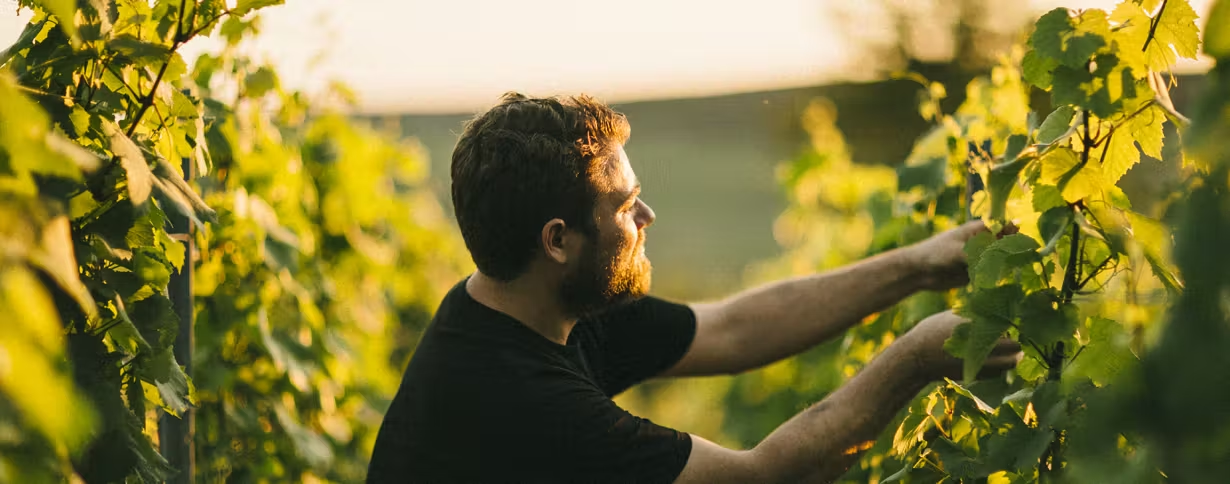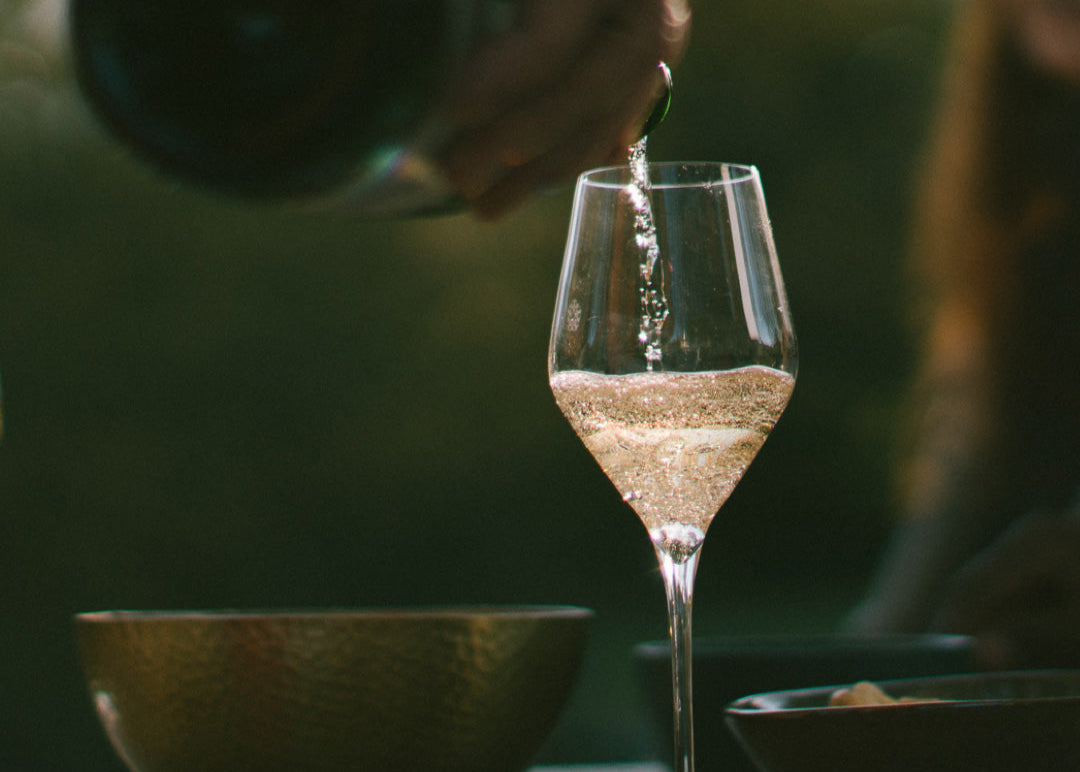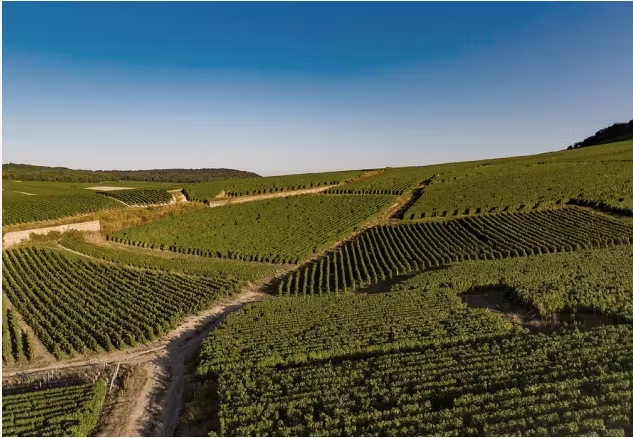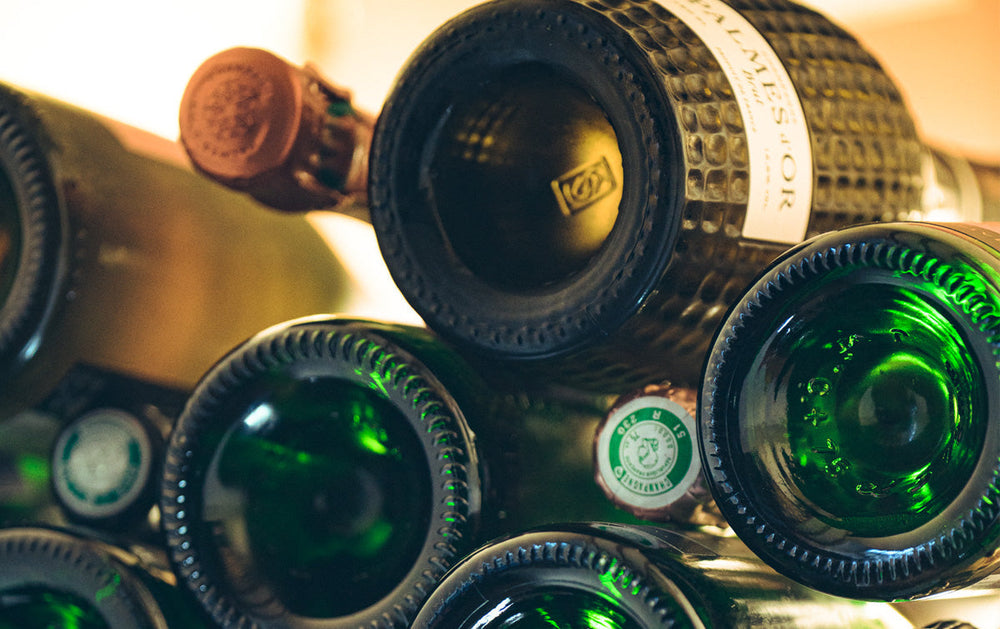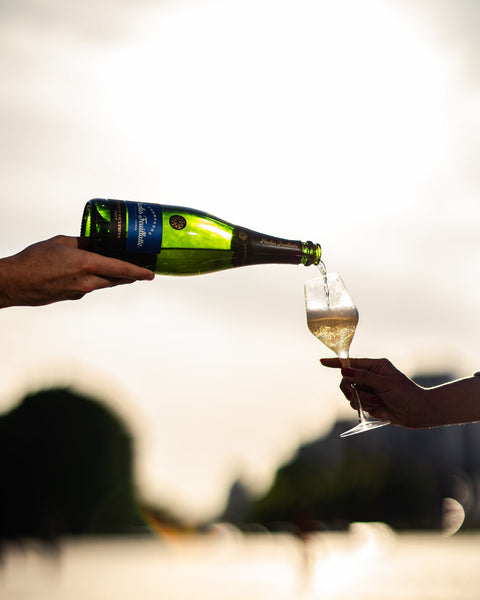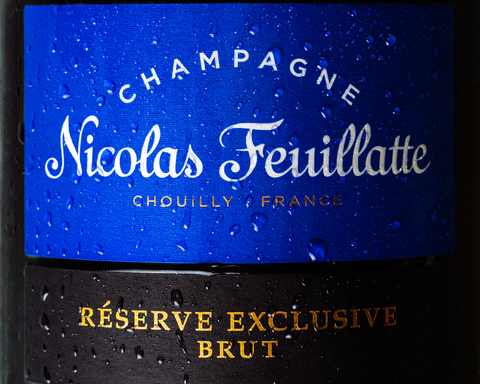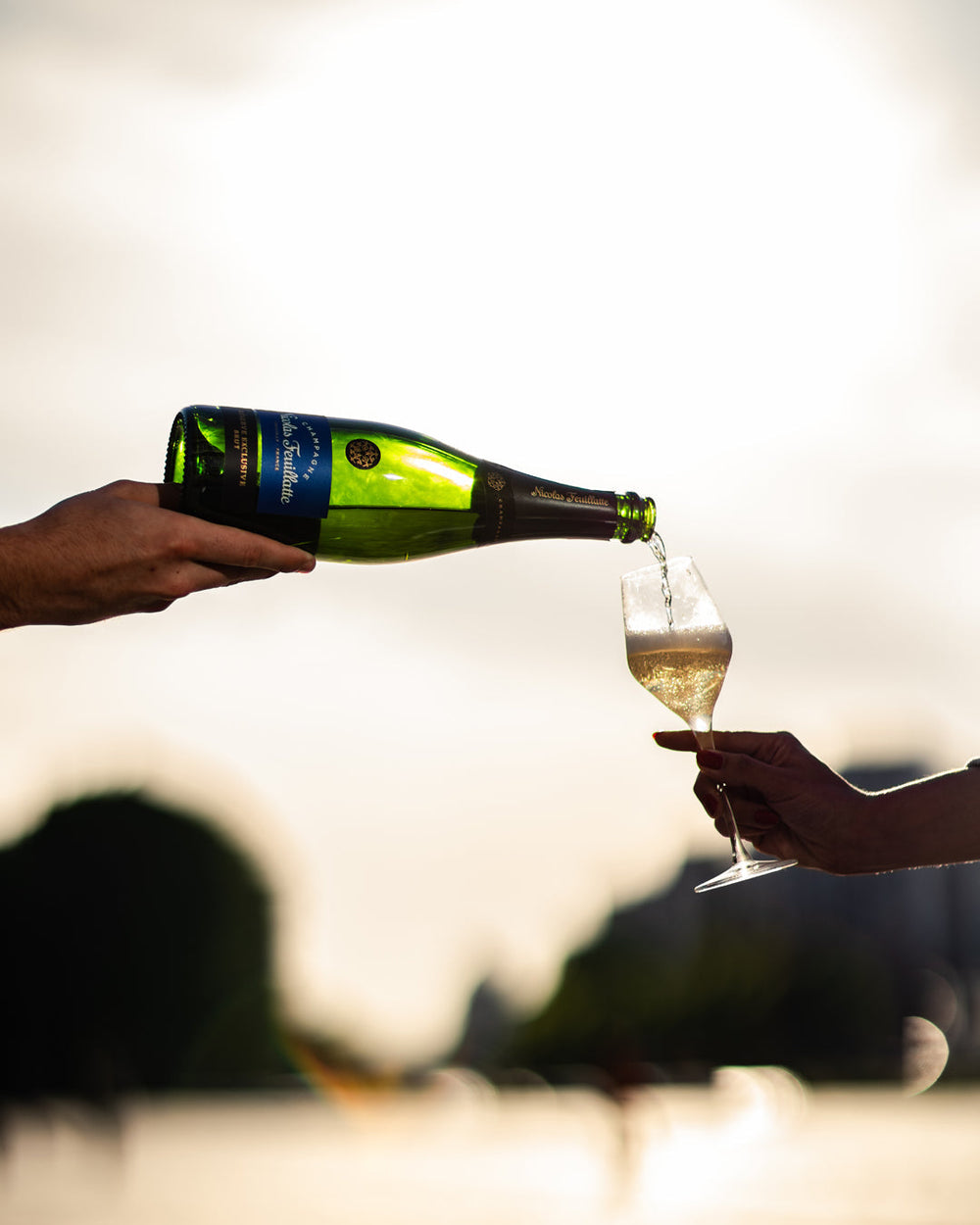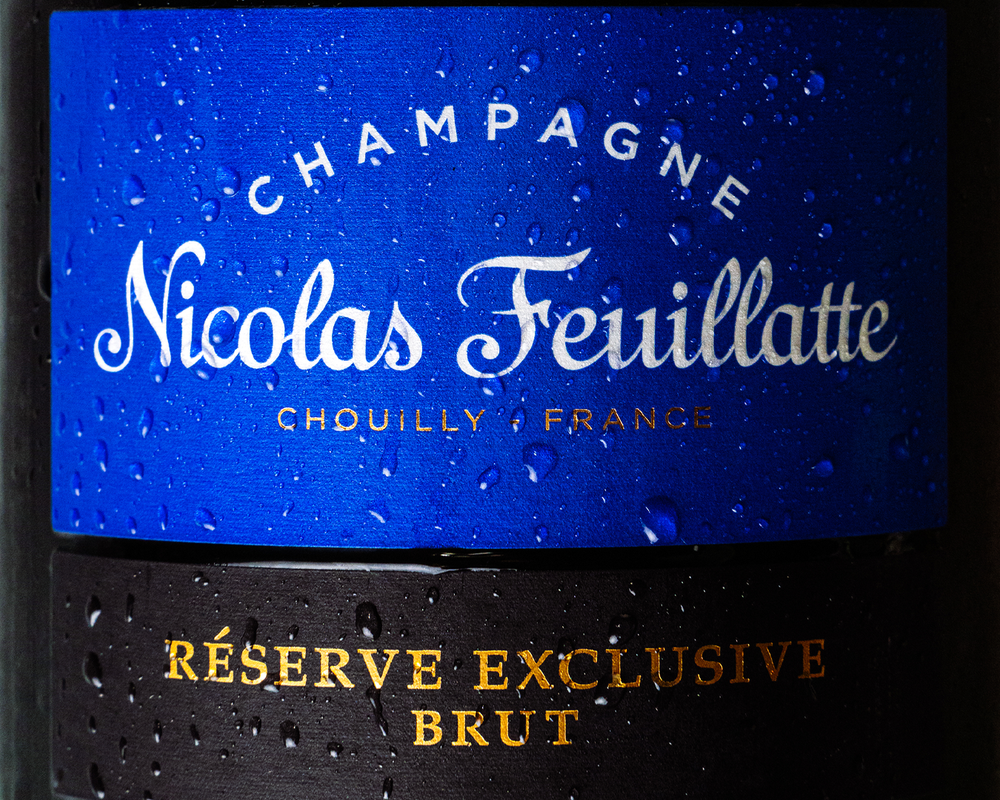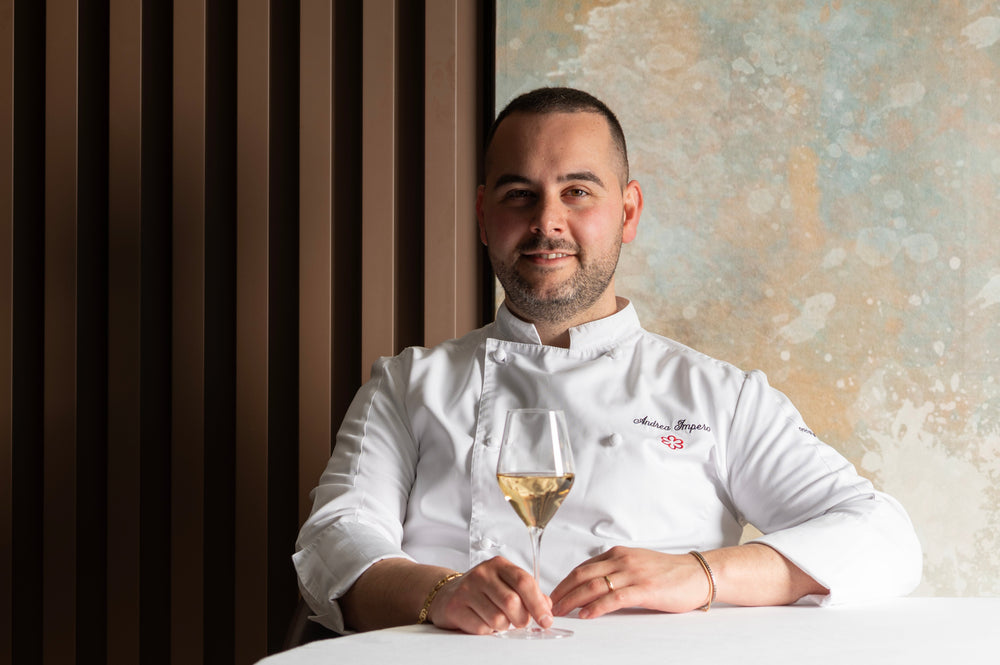Discover our tips to ensure that every bottle of champagne retains its freshness and sparkle until it is ready to be enjoyed.
The ideal storage temperature is between 10°C and 12°C. It is important to maintain a constant temperature, as variations can alter the wine's aromas and affect the structure of the cork, allowing air to enter the bottle.
Everything you need to know about storing champagne
Champagne is an exceptional wine, but it is also a fragile product. To preserve its quality, it must be stored under optimal conditions. Improper storage can quickly alter its aromas, effervescence and finesse. In this article, we explain everything you need to know about storing champagne, whether for long-term cellaring or for shorter periods. Read on to discover our top tips to ensure that each bottle retains all its freshness and brilliance until it's ready to be enjoyed.
When it comes to storing champagne in an apartment, be careful with living rooms or heated spaces! High temperatures, noise, excessive brightness and low humidity are not ideal. In this case, it's best to leave the bottles in their boxes and store them in a cool, dark place, such as a cupboard. The most efficient option is to invest in a refrigerated wine cabinet!
To keep champagne in optimal condition, several factors need to be considered. These include temperature, humidity, light and the position of the bottle.
The ideal storage temperature
Temperature is arguably the most important factor when it comes to storing champagne. If champagne is stored at extreme temperatures, whether too hot or too cold, its quality can deteriorate quickly. The ideal storage temperature is between 10°C and 12°C. It is important to maintain a consistent temperature as fluctuations can affect the aromas of the wine and alter the structure of the cork, allowing air to enter the bottle.
If the temperature is too high (above 15°C), champagne risks ageing prematurely. Conversely, if the temperature is too low (below 8°C), the development of aromas is slowed, and in some extreme cases, the liquid can freeze, causing irreparable damage to the wine.
The role of light
Light is the natural enemy of champagne. Prolonged exposure to light, whether natural or artificial , can alter the color of the wine and degrade its aromas. For this reason, it is best to store bottles in a dark place, away from direct light. This is also why many champagne bottles are made with tinted glass, to partially filter the light.
A dark cellar is therefore the ideal place to store champagne bottles. If you don't have access to a traditional cellar, opt for a cabinet or closed cupboard, away from strong light sources.
The position of the bottle
Champagne should be stored horizontally. This position allows the cork to remain in contact with the liquid, preventing it from drying out and allowing air into the bottle. A dry cork could cause premature oxidation of the wine, which would affect its freshness and taste.
On the other hand, if the bottle is stored upright, the cork may shrink slightly due to the lack of contact with the liquid, allowing oxygen to penetrate and spoil the quality of the champagne.
Humidity and ventilation
A well-ventilated cellar, with a humidity level between 70% and 85%, is ideal for maintaining cork quality. An environment that's too dry could dry out the cork, while one that's too humid could cause mold to grow. Also, make sure the storage space is well-ventilated to prevent the buildup of unwanted odors that could alter the taste of the champagne.
The shelf life of Champagne
The shelf life of champagne depends on the type of cuvée. Unlike some wines, champagne is not designed to age indefinitely. However, some bottles can be stored for several years under optimal conditions.
-
Non-vintage Champagne: This type of champagne is generally ready to drink upon purchase and can be stored for approximately 2 to 3 years without loss of quality.
-
Vintage Champagne: These champagnes, produced from a single exceptional harvest year, have a longer aging potential. They can be kept for 5 to 10 years, or even longer, depending on the initial aging time of the cuvée.
In both cases, it is important to consume the champagne before its quality begins to decline. The delicate aromas and effervescence can diminish over time, even under the best conditions.

How to store an open bottle of champagne
It's perfectly possible to keep an opened bottle of champagne for a few days, you simply need to follow certain rules. The first step is to use an airtight stopper specially designed for sparkling wines. This type of stopper helps maintain pressure inside the bottle and preserve the bubbles.
After replacing the cork, store the bottle in the refrigerator at a stable temperature of 4°C to 7°C. The champagne can thus be stored for 2 to 3 days without any noticeable loss of quality.
Storing Champagne outside the cellar
It may not always be possible to store a bottle in a cellar or refrigerated wine cabinet. Whether it's for a picnic, an outdoor party, or a trip, here are some tips for storing your champagne in unconventional conditions while maintaining its quality.
Using a Champagne basin
When hosting an outdoor event such as a picnic or party, using an ice-filled bowl is a practical way to keep champagne cool. To ensure even distribution of the cold around the bottle, fill the bowl with a mixture of ice and water. This method keeps champagne at an ideal temperature for optimal enjoyment: between 8°C and 10°C.
Insulated bags and coolers
If you're on the go or traveling, insulated bags and portable coolers are effective solutions for keeping your champagne at the right temperature. These accessories can keep wine chilled for several hours, especially if you add ice packs inside.
Avoid thermal shock and light
If you're out and about or travelling, insulated bags and portable coolers are an effective way of keeping your champagne at the right temperature. These accessories can keep wine chilled for several hours, particularly if you put ice packs inside them.

Conclusion: Store Champagne to Prolong the Pleasure
To ensure that each bottle of champagne retains its freshness and quality, a few precautions must be taken when storing it. By paying attention to temperature, light and how the bottles are positioned, you can extend their life and enjoy them in optimal conditions. Whether you're storing champagne in a cellar, a refrigerator, or taking it to an outdoor party, these tips will help you to enjoy sparkling, flavorful champagne every time.
